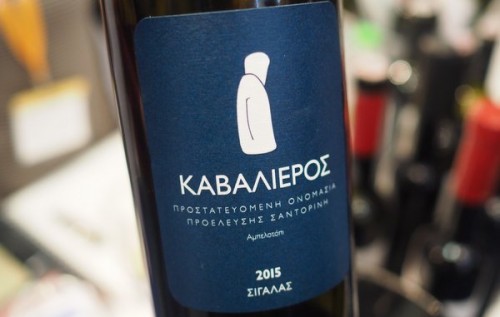
Here’s a written version of a talk I gave to Greek wine producers in Athens yesterday. It’s not exactly what I said (I never read talks); but rather it’s something written around the points on my powerpoint presentation.
Greek wine on the global stage
Jamie Goode, www.wineanorak.com
Selling wine is hard, but some people succeed. Within every wine region, there are success stories as well as tales of despair. Understanding the global market for wine, with all its complexities and niches, is one way to make success more likely.
Perhaps the key factor in selling wine on export markets is getting good distribution: if your wines are in front of consumers they will buy them. If they are on wine lists or on the shop shelf, then people have a chance to choose them. Many mediocre wines are highly profitable because they are well distributed and marketed.
Wine is typically production led. People decide they want to make wine, and then once they have a full warehouse, then they try to sell it. So the issue of route to market the key one facing most producers. There are tends of thousands of different wine brands globally, with a mismatch between the scale of production (usually small) and the needs of the market (generally for larger volumes in fewer channels). This creates structural problems.
Where do you fit in to the wine marketplace? This is an important question to answer if you are a wine producer.
First, it’s important to realize that there isn’t just one market for wine, but rather there are many different markets, each with their own demands and rules. There’s some overlap, but it is unhelpful to think of the wine market as just one single entity.
Nor does there exist this rather mysterious single person-type – the ‘consumer’. Consumers come in all shapes and sizes.
Consequently, you have to decide where you fit into the marketplace, and where you want to play. What is your route to market? Who are you selling wine to? What is your niche?
The first piece of advice I would give is to avoid the bottom end of the market. This is easier said than done if you have large volumes of wine to sell.
The advantage of playing at the bottom end is that there is a big market for inexpensive wine, and a tiny market for expensive wine. So if you sell your wine cheaply, it is possible to sell a lot of wine.
The disadvantage of playing here is that you will be squeezed on margins. Also, you are competing with people who can make drinkable wine at incredibly low prices. There are perfectly adequate wines on sale in UK supermarkets for £5 a bottle still, which is remarkable considering the level of duty and VAT on wine in the UK. Supermarkets will be paying less than a Euro a bottle ex cellars for these wines. If your ex-cellars price is higher than a couple of Euros, supermarket buyers won’t be interested.
The problem is that there is an over-supply of cheaper wine, and producers therefore have no negotiating power. Plenty of people are behind you in the queue, and you will lose your slot if you put your prices up.
Of course, commodity wine is important, but it’s a horrible place to play. Most normal people just want a nice glass of wine that doesn’t taste bad and which is affordable. It doesn’t matter where it comes from, but grape varieties often used as a buying cue (e.g. Sauvignon Blanc, Chardonnay), and sometimes country of origin might be. There is little brand loyalty, and this route to market is controlled by large retailers who buy to price.
What about ‘Greek wine’ as a brand? Is there are role for generic marketing? Possibly, yes, but we need to explore how this might succeed. The first thing to emphasize is that this requires a high degree of cooperation and collaboration for it to work. Everyone has to see that a rising tide does indeed float all boats, and that success for one is success for all. Your competitors aren’t your fellow producers. There’s a need here for vision and long-term thinking.
It’s important to think about how your wine looks to others, coming across it for the first time. Take a step back and see with fresh eyes. And understand the markets you are selling into. You need to be realistic about what you have. Make use of third-party constructive criticism of your wines from people who have the right sort of context and understanding. Don’t be so close to your wines that you can’t bear to have them criticized. But at the same time, believe in what you do and don’t damage the integrity of your venture by shifting everything to suit whims and fashions.
It’s good to make use of influencers. This doesn’t just mean journalists with newspaper columns. There are also influencers who have some weight with the trade and gatekeepers. It’s possible these days to access rough metrics that allow you to gauge the extent of influence that wine communicators have. Look at the sort of material they produce before sending samples or trying to connect with them: do they have a track record of writing about your sorts of wines? Will they be able to give you coverage before you have distribution?
You only get one chance: first impressions matter. If you are going to start talking about your wines, they initiate the conversation at the right time, and get the message right from the start.
If it looks like generic marketing won’t work, then consider gathering together in producer groups. Devise a joint marketing plan, pooling resources. Be creative and think of fresh, innovative ideas to get attention. Decide on a unified message, tone-of-voice and collective image. It always looks good to others when producers collaborate and get alongside together.

Always: think of how this looks to outsiders.
Be realistic in setting goals and expectations; think longer-term.
There are some success stories in the world of wine, and I’d like to pick on just three of them as examples. The first is Provence Rosé. Here we have a region where there’s a perfect match between the product image and the image of the place. Provence makes good white and red wines, but it excels with rosé, and it has been smart enough to market itself as a single-style region. Provence rosé is good quality, it is aspirational, and producers realize that the packaging and presentation matter as much as the wine quality, and actually serve to enhance wine quality. They have experimented to good effect with alternative bottle shapes, too, and this has been well received. It is never sold for its value for money, but, like Champagne, it is unapologetically expensive compared with its competition.
Marlborough Sauvignon Blanc is a superb success story. Here we have a new-ish region that has grown massively over the last 30 years, and with it the New Zealand wine industry has grown. New Zealand is defined by Sauvignon Blanc, and the Marlborough version took the world by storm. It’s consistently good, it’s immediately recognizable, and the brand story has been kept very simple. New Zealand makes other excellent wines, but it has kept Sauvignon wisely to the fore.
Central Otago Pinot Noir is an example of a region choosing a simple marketing message, offering consistently good, tasty wines, and succeeding. Central Otago makes many interesting wines but has built its image around the one variety it does best. It has also been a very collaborative, together sort of region.
There are many niches in the wine world, and you have to find yours, if you are making anything other than cheap wine. One example of a niche that has worked well for many small producers is natural wine. It has been a bit controversial, because some complain the wines are faulty, that there’s no official definition of ‘natural’, and that by calling your wines natural you are suggesting those of others are ‘unnatural’. But it has worked. Natural wine has its own ecosystem, with specialized routes to market. The natural wine consumer affairs seem to resonate well with younger wine drinkers in particular. And there are many specialist natural wine bars in cities around the world. This niche suits some producers but requires a big ideological commitment.
In closing I would say that you can only start from where you are now. The first step in approaching export markets is an honest appraisal of where things stand. Get someone smart and impartial to give you feedback. Put yourself in the shoes of others when assessing your wine range. Look for compelling stories that are already there as you set out to tell others about you. Don’t underestimate the power of packaging: people’s expectations are shaped hugely by how a wine is presented, and the context in which it is opened. Look at trends in wine styles: ripeness, oak use, fruit profile. What does the modern marketplace (or at least the bit you play in) expect? With social media, you get to tell your own story.
Selling wine is difficult, but some people succeed. If it is to be you, the first most important decision is to choose where you want to play in the marketplace. Everything else will follow on from that.
1 Comment on Greek wines on the world stage: a talk I gave in Athens
You don’t say anything about duty! Some small Greek producers currently have a problem with exporting wine under bond and can only export duty paid wine. This is a huge headache for exporters and importers alike and is definitely a significant barrier. It’s much more expensive and complicated to ship duty paid wine and this is holding back trade.